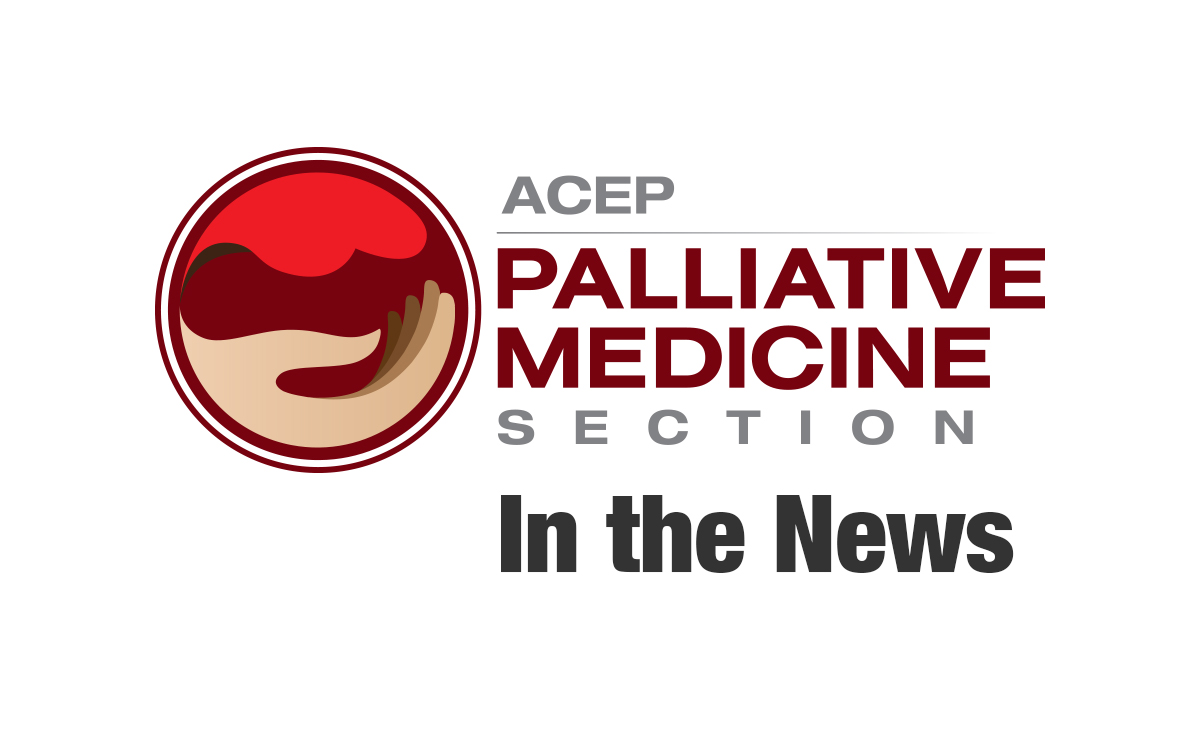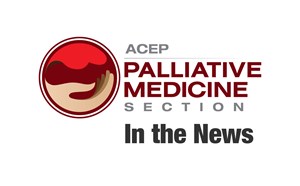
ED Palliative Pulse - October 2021
Clinical Pearl: 5 Hospice Myths
- Hospice is a place:
Hospice is a philosophy of providing terminally ill patients the best possible care for them to enjoy their lives and support their families. It can be provided in a range of environments including the home, board, and care, SNF, hospice houses, and inpatient hospice care.
- Hospice is for people actively dying:
Hospice is appropriate for patients who a physician has given a terminal diagnosis resulting in likely less than 6 months to live. The longer they are on hospice the more benefits they receive. Patients and families often express that with admission to hospice, they finally felt supported enough to be more active again in their lives. Some patients live past the 6-month interval yet continue to qualify for hospice services.
- Hospices only treat with morphine and Ativan:
The goal of hospice is to support quality of life and preserve functioning for the last stages of life. Medications such as antibiotics, breathing treatments and diuretics are just a few examples of the treatments provided with this intention. In addition to medications, hospice also provides needed equipment such as a hospital bed, wheelchair and oxygen tanks and concentrators. There is also a nurse available to come to the home of the patient and stay until symptoms are controlled 24/7.
- Hospice only treats the patient’s physical symptoms:
Hospice is composed of a team that includes but is not limited to chaplains, health aides, nurses, physicians, social workers, and volunteers. They go into the patient’s home and support the whole family and other caregivers. Often it is the psycho-social aspects as well as spiritual concerns that may be most distressing to terminally ill patients and their loved ones. Hospice services continue after death, supporting families with bereavement 13 months after the death of the patient.
- Patients must be a DNR to go on Hospice:
Though the philosophy of hospice is alignment with having a natural death at home, patients may elect to be any code status at any time. Sometimes patients start hospice as a full code, but over time, as they become more reassured by the good care they are receiving at home, they change to a DNR.
ED Palliative Program Highlight
Hospital: Cedars-Sinai Medical Center, Los Angeles, CA
Site Specifics (e.g., hospital type, size, palliative team staffing): Quaternary care urban academic medical center. 95K ED visits/year. Inpatient palliative team: 9-10 MDs, 2 NPs, 1 Pharmacist, 1 Chaplain, 3 SW.
Model: ED Director of Palliative Care role created to promote and support ED clinicians’ primary palliative care skills through quality improvement initiatives and ongoing education. Partners with palliative care ED physician champion.
Program Specifics: Serious Illness Communication Skills workshops modeled on Vitaltalk, Ariadne Labs, and Ouchi, et al, (Annals, 2020) code status conversation map. Created computer-based best practice alert (BPA) indicating patient has had DNAR in past or has POLST and prompts ED clinician to enter code status (abstract to be presented at ACEP21 research section).
Support/Funding: QI project supported by ED and hospital leadership, reports to medical center’s Quality Council.
Lessons Learned: Enlist key stakeholders, including frontline ED clinicians and leadership. Support and meet providers where they are. Take a long-range view.
Next Steps: Expand communication skills curriculum. Support ED RN QI based on similar BPA.
Contact: Tony Loffredo, MD, MHDS, FACEP, ED Director of Palliative Care anthony.loffredo@cshs.org
Research Article of the Month
United States Best Practice Guidelines for Primary Palliative Care in the Emergency Department
What the authors did: Dr. Loffredo and his colleagues from across the country developed a robust and comprehensive view of “primary” palliative care in the ED, published in Annals of Emergency Medicine. The authors convened an expert panel to develop best practices for frontline EM providers, covering everything from screening and assessment of palliative needs, to goals of care conversations and hospice referral. The panel scoured the literature and developed condensed and digestible guidelines for EM providers delivering primary palliative care. Readers may find Table 2 – Treating Refractory Symptoms in the Emergency Department – particularly useful for a quick guide to symptom management in the ED. Also helpful is their summary of hospice care delivery.
Why it matters: Increasingly, EM clinicians recognize the need for palliative care medicine for their ED patients. These guidelines, published in the major EM journal, provide a foundation for all EM clinicians seeking to provide primary palliative care.
Announcements
- Palliative Medicine Section meeting at ACEP2021
- Where: Boston, in person or virtually.
- When: Monday, October 25, 11am-1pm EST
- Happy Hour to follow
We’d love to see you all there! This is a great opportunity to see old friends and make new connections.
- EM-Palliative trailblazers, please enroll here to be included in an expert speaker database- ACEP/SAEM Palliative Medicine Expertise Database
